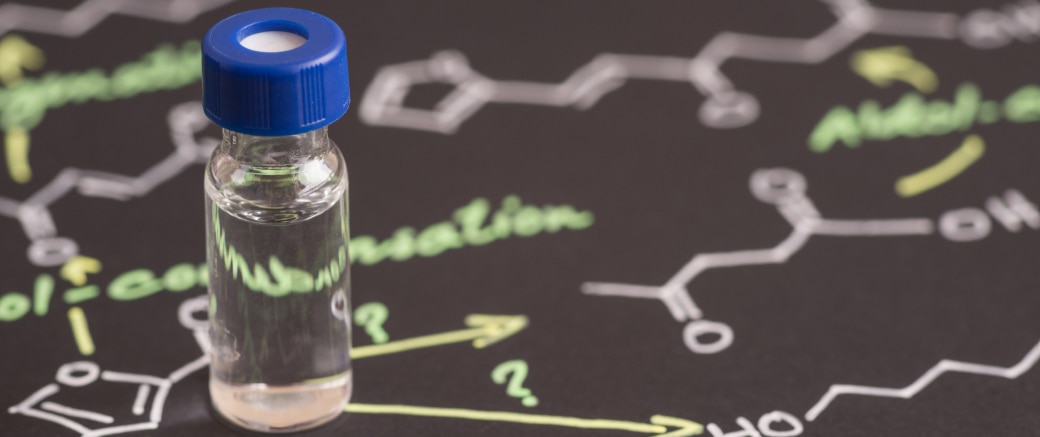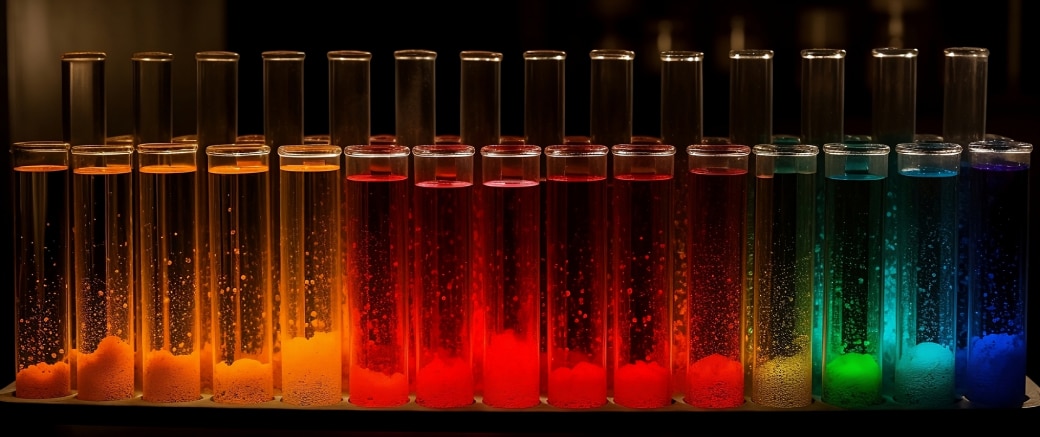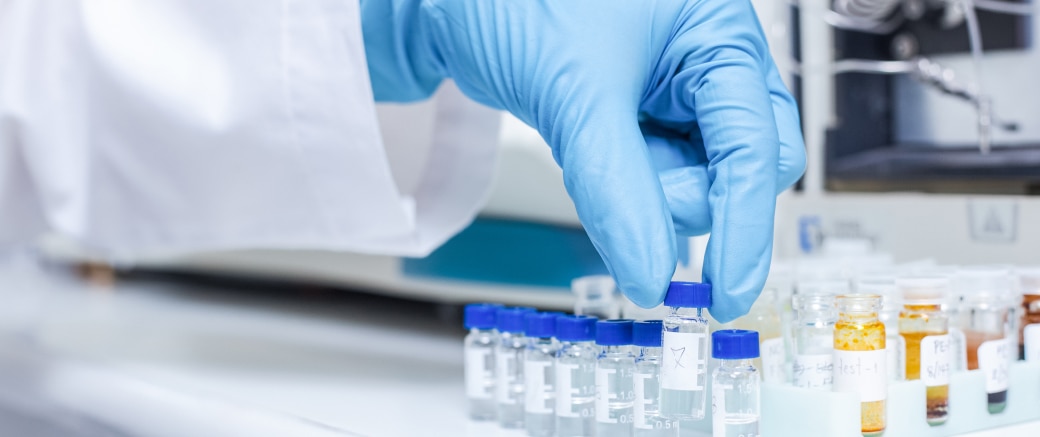Learn About the Different Types of Chromatography, Their Applications, and Practical Aspects
Types of Chromatography: Liquid And Gas Chromatography: Learn About Fundamentals And Practical Aspects

Chromatography is a technique that separates complex mixtures into its individual components for identification and quantification. It was first developed in the early 1900s by Russian botanist, Mikhail S. Tswett. He demonstrated the separation of colored plant pigments and termed this technique “chromatography". It was not until several decades later, around the 1930s, where this technique sparked off further developments.
Scientist Archer J. P. Martin, who worked on paper partition chromatography, went on to develop Gas Chromatography (GC) with fellow scientist Anthony T. James. Their invention on GC was awarded the Nobel Prize in Chemistry in 1952 and it set the stage for many other developments such as Liquid Chromatography (LC) and Gas Chromatography Mass Spectrometry (GCMS).
Types of Chromatography

The development of different chromatography techniques is led by the need to address a variety of challenges and demands presented by chemical analysis. Among them are varying sensitivities, matrix compatibilities, analytes, regulatory guidelines, as well as speed and throughput.
Here are some chromatography methods that are commonly utilized for qualitative and quantitative analysis.
Gas Chromatography
GC is a chromatography technique that vaporizes the sample mixture into gaseous compounds and separates them based on the boiling point of the compounds and their differential adsorption on a porous solid or liquid support. It is commonly used for the analysis of low molecular weight and volatile compounds and is widely applicable in many industries such as in forensic science, food, environmental testing, pharmaceuticals, petrochemical, pesticides and fragrances.
GC is also known as gas-solid, gas-liquid partition, or gas liquid chromatography due to the distribution of compounds between the solid/liquid stationary phase in a column and the gaseous mobile phase.
Firstly, the sample mixture is injected, vaporized, and flows into the thermally-controlled column by an inert gas. The sample compounds can interact with the stationary phase through various intermolecular forces such as Van der Waals forces and dipole-dipole interactions. Some compounds tend to interact more strongly due to their polarity, thereby resulting in a higher concentration in the stationary phase compared to the mobile phase. As a result, these compounds are strongly retained in the column and have longer retention time (RT) compared to compounds of weaker interactions with the stationary phase.
As time passes, with continual flow of inert gas and a thermally-controlled column, the variations in the partition coefficients of the compounds result in the separation of the compounds in a mixture. The separated compounds subsequently elute from the column and get detected.
High-Performance Liquid Chromatography
High Performance Liquid Chromatography (HPLC) is a process of separating components in a liquid mixture. A liquid sample is injected into a stream of solvent (mobile phase) flowing through a column packed with a separation medium (stationary phase). Sample components separate from one another by a process of differential migration as they flow through the column.
As bands emerge from the column, the flow carries them to one or more detectors which deliver a voltage response as a function of time. This is called a chromatogram. For each peak, the time at which it emerges identifies the sample constituent with respect to a standard. The peak’s area represents the quantity.
High performance liquid chromatography is also known as high pressure liquid chromatography.
Reversed Phase Liquid Chromatography (RPLC)
A non-polar stationary phase and a polar mobile phase is used for RPLC. Based on the 'like attracts like' principle, the sample is separated based on the molecule's polarity preference to either the polar mobile phase or the non-polar stationary phase. For example, the non-polar molecules will prefer to retain in the non-polar stationary phase rather than the polar mobile phase. As a result, it gets eluted later compared to the polar molecules.
Normal Phase Liquid Chromatography (NPLC)
NPLC works entirely opposite to RPLC. In NPLC, a polar stationary phase and a non-polar mobile phase are used. Polar molecules are strongly retained by the stationary phase as compared to the non-polar molecules. As a result, the non-polar molecules elute first.
Hydrophilic Interaction Liquid Chromatography (HILIC)
HILIC works on the same principle as NPLC. The main difference is that water is added in the organic mobile phase to effectively separate and elute the strongly-retained polar molecules.
Size Exclusion Chromatography (SEC)
The SEC column used is filled with porous particles. When samples of various sizes flow into the column, smaller molecules migrate more slowly because they penetrate deep into the pores, whereas large molecules flow quickly as they do not enter the pores as much. As a result, larger molecules elute from the column sooner, which effectively sorts the samples by molecular size.
Ion Exchange Chromatography (IEC)
IEC retains and separates charged species (ions) based on electrostatic affinity of the analyte for the stationary phase containing a functional group of an opposite charge. Differential elution is induced either by changing the pH of the mobile phase to neutralize the analyte, or by increasing the ionic strength (salt concentration) to competitively displace the analyte.
Paper Chromatography
In our article, we have focused on liquid and gas chromatography, but it's worth noting the versatility of different chromatography techniques. Paper chromatography, for instance, utilizes chromatography paper as a stationary phase, immersed in a solvent mixture as the mobile phase. Here, specialized absorbent paper is employed, causing components to separate and form distinct bands as they migrate to different heights, revealing the sample's composition.
Although distinct from liquid and gas chromatography, paper chromatography remains a valuable tool, particularly in settings where its specific characteristics are advantageous.
Choosing The Right Analytical Technique
The choice of technique generally depends on the nature of the sample and the type of analysis required. GC and LC, the two most widely-used chromatographic techniques in the industry, are frequently being compared. A concise comparison of GC and LC and the key features and differences are listed below.
| GC | LC | |
|---|---|---|
| Separation principle | - Partition between the gaseous mobile phase & solid/liquid stationary phase - Polarity of compound - Boiling point of compound |
- Partition between the liquid stationary & mobile phase - Polarity of compound - Other separation modes (e.g. ion exchange, size exclusion, reverse-phase) are available |
| Mobile phase | Inert gas | Solvent/buffer (liquid) |
| Pressure requirements | - Requires lower pressure to operate (max 1200 kPa) | - Requires high pressure to operate - HPLC & UHPLC* (30 – 140 MPa) |
| Sample requirements (Compound nature) | - Volatile - Thermally stable - Low molecular weight (e.g. alcohols, short-chain fatty acids, pesticides and VOCs) |
- Soluble in liquid phase - Not limited by molecular weight or polarity (e.g. proteins, peptides, amino acids and polymers) |
| Type of detectors | - Consists of MS or ionization and conductivity detectors (e.g. flame ionization, thermal conductivity, photoionization, electron capture & barrier discharge ionization) - Generally destructive in nature |
- Consists of MS or spectroscopy techniques (e.g. UV, fluorescence, refractive index, conductivity & light scattering) - Generally non-destructive in nature |
Shimadzu Digital Classrooms: All You Need To Know About Chromatography

Join us on Shimadzu Digital Classrooms, where you can explore the world of chromatography and gain valuable insights into its industry applications.
In these sessions, we will focus on the use of chromatography in practical aspects, such as addressing food safety concerns. For example, we can delve into the use of LC-GC-FID to analyze mineral oil pollutants in edible oils and food contact materials. These pollutants, known as saturated (MOSH) and aromatic hydrocarbons (MOAH), pose significant risks to food safety. We will discuss the challenges involved in analyzing these pollutants and how the newly introduced automated saponification workflow can save time and effort while maximizing the results.
Moreover, stay ahead of the curve with our sessions on the latest technology insights and tips. Discover Advanced Liquid Injection Techniques for Gas Chromatography and explore Alternatives to Liquid Injection for Gas Chromatography to level up your competency level in gas chromatography. We will also provide practical lab insights on GC Columns Care & Troubleshooting to help you optimize your chromatography workflow.
If you are a liquid chromatography user, be sure not to miss our tips and tricks such as Streamlining Your Purification Workflow With Automation. Additionally, we will showcase Shimadzu's latest technology in the World of Living LC, and introduce our Analytical Intelligence in Analytical by Design Approach (AQbD) Method Development, enabling an AI-driven approach to speed up the traditionally tedious and time-consuming process.
Whether you are an experienced chromatography user or new to the field, our Shimadzu Digital Classrooms provide a wealth of knowledge across various industries, including food, agriculture, environment, pharma, biopharma, chemical and manufacturing, and clinical. We are here to enable you with the latest insights and keep you at the forefront of chromatography advancements.
Join us anytime, anywhere, and embark on a journey of continuous learning with Shimadzu Digital Classrooms!


